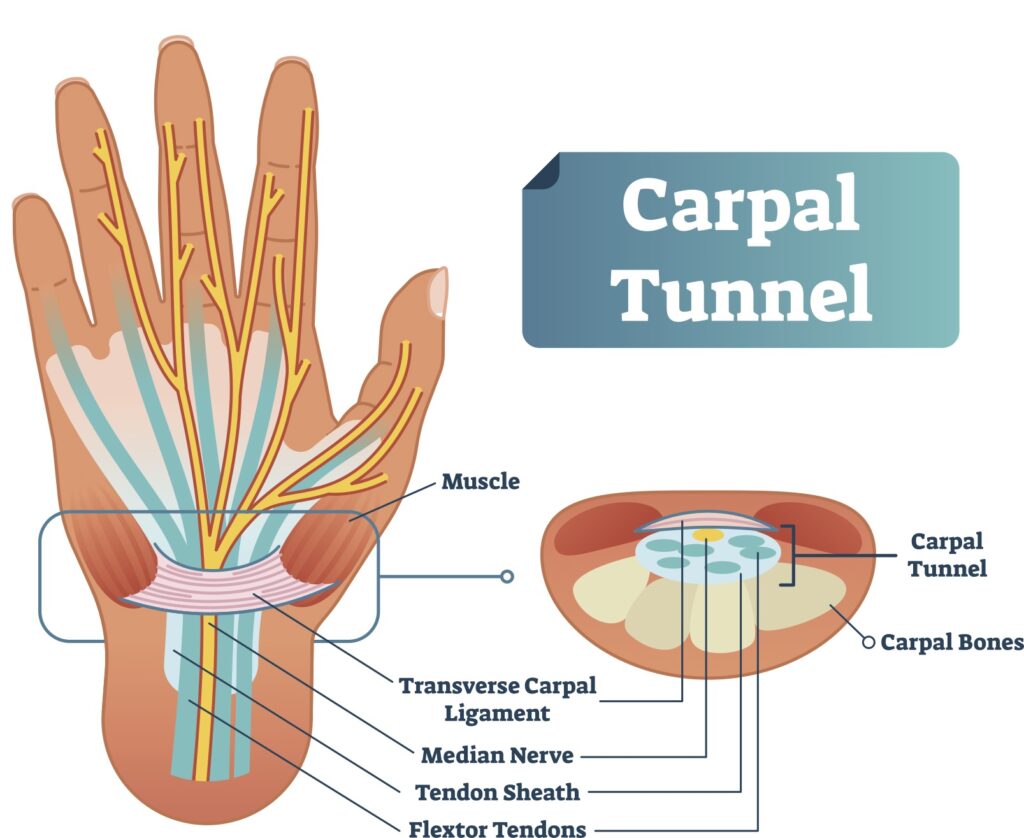After carpal tunnel syndrome surgery, your doctor may recommend hand therapy for rehabilitation and getting your hand back to normal. Here’s an idea of what to expect from your carpal tunnel syndrome exercises after surgery and why they’re important.
What Happens During Carpal Tunnel Release Surgery?
The aim of carpal tunnel release surgery is to release the pressure on the median nerve and create more space in the carpal tunnel.
The procedure involves cutting the ligament that covers the carpal tunnel. This incision takes the pressure off the median nerve. By dividing the ligament in the wrist and relieving pressure on a nerve, it can free up the hand to move. The incision is then stitched up.

Why are Carpal Tunnel Syndrome Exercises Important After Surgery?
In some cases, your surgeon may recommend you to a physiotherapist or hand therapist. In general, using your hand after carpal tunnel release surgery can help to reduce swelling and stiffness. However, if you overdo it and jump into hand exercises too quickly after surgery, this can actually delay your recovery. That’s why it’s important to follow your surgeon’s guidance.
Carpal tunnel syndrome exercises after surgery aim to improve movement in your wrists and hands. They also help to strengthen your hands, fingers, wrist, and forearm following the operation. Following your surgery, recovery may involve a combination of the following:
- Brace or splint
- Pain killers (as recommended by your doctor)
- Exercises
Carpal Tunnel Syndrome Exercises After Surgery Examples
Here are some examples from The Royal Orthopaedic Hospital of the types of carpal tunnel syndrome exercises after surgery your doctor may ask you to do during recovery.
- Moving your fingers through four fist positions starting straight for 10 repetitions.
- Pushing your palms together and gently lifting your elbows until you feel a stretch.
- Bending your wrist as far as you can while resting on a table.
Normal activities like getting dressed and brushing your teeth will also help to strengthen your hand throughout your recovery. It can take a few months to fully recover from carpal tunnel syndrome release surgery, and get your hand back to full strength.
When it comes to driving following your surgery, the following should apply to you:
- Fully recovered from any anaesthetic
- Pain or discomfort doesn’t affect your ability to concentrate
- Can move your hand freely to drive safely
- Can perform an emergency stop
Your doctor will be able to guide you on when you can drive after your surgery. But this gives you an idea of where you need to be in your recovery before driving.
Carpal Tunnel Syndrome Surgery at The Harley Clinic London
If you’re experiencing pain from carpal tunnel syndrome or considering hand surgery, book a consultation today at The Harley Clinic. We can talk you through your treatment options and create an individual plan to move forward.
To read more about the top cosmetic procedures, we’ve pulled together the ultimate guide to plastic surgery statistics. Or check out the latest news and tips on our Cosmetic Surgery Blog.













